-
 Bitcoin
Bitcoin $116500
0.84% -
 Ethereum
Ethereum $3829
4.17% -
 XRP
XRP $3.048
1.61% -
 Tether USDt
Tether USDt $1.000
0.02% -
 BNB
BNB $775.2
0.54% -
 Solana
Solana $169.3
0.44% -
 USDC
USDC $0.0000
0.02% -
 TRON
TRON $0.3412
1.98% -
 Dogecoin
Dogecoin $0.2130
3.62% -
 Cardano
Cardano $0.7539
1.53% -
 Hyperliquid
Hyperliquid $39.16
0.66% -
 Sui
Sui $3.673
5.28% -
 Stellar
Stellar $0.4074
1.72% -
 Chainlink
Chainlink $17.95
7.06% -
 Bitcoin Cash
Bitcoin Cash $576.8
1.16% -
 Hedera
Hedera $0.2506
0.97% -
 Ethena USDe
Ethena USDe $1.001
0.00% -
 Avalanche
Avalanche $22.52
1.46% -
 Litecoin
Litecoin $121.4
2.31% -
 UNUS SED LEO
UNUS SED LEO $8.957
-0.39% -
 Toncoin
Toncoin $3.305
3.22% -
 Shiba Inu
Shiba Inu $0.00001252
1.30% -
 Uniswap
Uniswap $10.06
3.69% -
 Polkadot
Polkadot $3.736
1.76% -
 Dai
Dai $1.000
-0.01% -
 Bitget Token
Bitget Token $4.418
1.82% -
 Monero
Monero $261.2
-7.81% -
 Cronos
Cronos $0.1477
2.56% -
 Pepe
Pepe $0.00001076
2.29% -
 Aave
Aave $273.3
4.22%
How is Sol coin produced?
Solana employs a hybrid proof-of-stake consensus mechanism, wherevalidators chosen randomly through a stake-weight system create new blocks and secure the network.
Feb 05, 2025 at 01:18 am
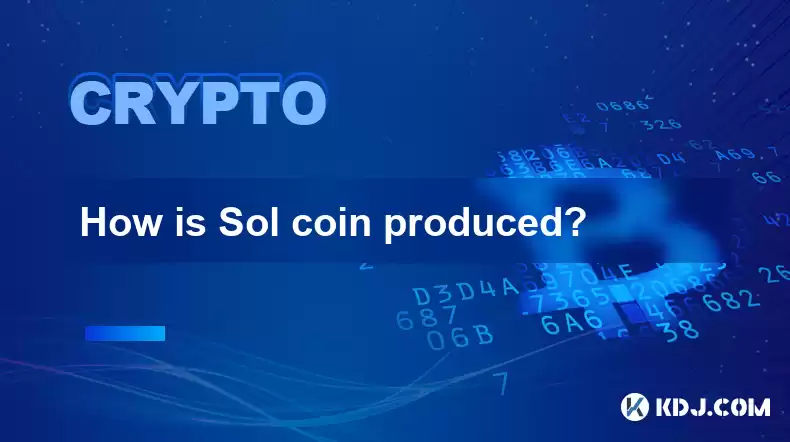
Key Points:
- Understanding Blockchain Technology: The Foundation of Sol Coin
- Proof-of-Stake: A Consensus Mechanism for Sol Coin Production
- Validators: The Key Players in Sol Coin Production
- Sol Coin Inflation and Transaction Fees
- Staking as a Means to Earn Sol Coin Rewards
- Halving Events: Regulating Sol Coin Production
- Future Developments in Sol Coin Production
How is Sol Coin Produced?
1. Understanding Blockchain Technology: The Foundation of Sol Coin
Sol coin, a digital currency created by the Solana project, is produced through a distributed ledger technology known as blockchain. A blockchain is a secure and transparent record of transactions maintained across a network of computers. Each block in the chain contains a set of transactions that have been validated by the network participants and added to the existing record.
Solana's blockchain differs from other popular cryptocurrencies like Bitcoin and Ethereum. It employs a unique combination of proof-of-history and proof-of-stake consensus mechanisms, which optimize the network's speed and efficiency in processing transactions while ensuring its security.
2. Proof-of-Stake: A Consensus Mechanism for Sol Coin Production
Proof-of-stake is the core consensus mechanism that governs the production of Sol coin. This mechanism relies on a random selection of validators to validate new transactions and create new blocks. Validators are network participants who have staked a certain amount of Sol coins to secure the network.
In the proof-of-stake system, each validator has a chance to be selected to propose the next block of transactions. If the proposed block is valid and contains no malicious activity, other validators in the network will vote to approve it. Once the block is approved, it is added to the blockchain, and the proposing validator is rewarded with Sol coins.
3. Validators: The Key Players in Sol Coin Production
Validators play a crucial role in the production of Sol coin. They are responsible for validating transactions, proposing new blocks, and securing the network. To become a validator, a user must stake a minimum of 10,000 Sol coins. This staked amount represents their commitment to the network and their willingness to participate in the validation process.
Validators are chosen randomly, based on their stake weight in the network. The more Sol coins a validator stakes, the higher their chances of being selected to propose the next block. This design encourages users to stake their coins and actively participate in the network's security, ensuring its robustness and integrity.
4. Sol Coin Inflation and Transaction Fees
Solana's blockchain is designed to be inflationary, meaning that the supply of Sol coins will increase over time. The issuance of new Sol coins serves two primary purposes: rewarding validators for their contributions and incentivizing users to stake their coins.
Solana's inflation rate is controlled by a mechanism called "seignorage." Seignorage refers to the process of creating new coins through mining or staking, and it is used to cover the costs of network operations and development. The seigniorage rate is determined by a variety of factors, including the current network usage, the number of staked coins, and the price of Sol coin.
In addition to seignorage, Sol coin inflation can also be influenced by the demand for the coin in the market. If the demand for Sol coin increases, its price will rise, which will in turn increase the incentive for validators to propose new blocks and earn rewards. This can lead to a higher inflation rate as more Sol coins are created to reward validators.
Transaction fees on the Solana network are determined by the level of network congestion and the size and complexity of the transaction. The fees are paid to validators to compensate them for the computational resources required to process and validate transactions. As the network usage increases, so too will the transaction fees.
5. Staking as a Means to Earn Sol Coin Rewards
Staking Sol coins is a way to participate in the network's security while earning rewards. Users who stake their coins are eligible to receive a portion of the seignorage revenue generated by the network. The amount of rewards earned is proportional to the amount of Sol coins staked.
To stake Sol coins, users can use a non-custodial wallet or participate in a staking pool. Non-custodial wallets give users full control over their private keys and staked coins, while staking pools allow users to participate in staking without running their own validators.
6. Halving Events: Regulating Sol Coin Production
Halving events are a feature of the Sol coin production process that periodically reduce the inflation rate. During a halving event, the block reward for validators is halved, reducing the number of new Sol coins created. This mechanism is designed to control the supply of Sol coins and prevent excessive inflation.
The first halving event for Sol coin occurred on August 9, 2023, reducing the block reward from 8 Sol coins to 4 Sol coins. The next halving event is expected to occur in 2027. The number of halving events is predetermined and will continue indefinitely.
7. Future Developments in Sol Coin Production
Solana is a rapidly evolving blockchain ecosystem, and there are numerous developments in progress that could impact the production of Sol coin.
- Solana Mobile Stack (SMS): SMS is a mobile-based blockchain stack designed to make it easier for developers to create and deploy Solana applications. This could lead to increased adoption of Solana and increased demand for Sol coin.
- Solana Pay: Solana Pay is a payment platform that allows users to send and receive payments using Sol coin. This could increase the utility of Sol coin and drive demand.
- Solana Labs: Solana Labs is a research and development team focused on improving the Solana blockchain. Their ongoing work could lead to innovations that enhance the efficiency and security of Sol coin production.
FAQs:
Q: What is the total supply of Sol coin?
A: There is no fixed total supply for Sol coin. Instead, the supply is inflationary, with new coins being created through seignorage and block rewards.
Q: How often are new blocks created on the Solana blockchain?
A: New blocks are created every 400 milliseconds on average. This rapid block time contributes to the Solana network's high speed and efficiency.
Q: What is the difference between Solana and Ethereum?
A: Solana uses a unique combination of proof-of-history and proof-of-stake consensus mechanisms, while Ethereum uses a proof-of-work consensus mechanism. Solana is also faster and more energy-efficient than Ethereum.
Q: How do I earn Sol coin rewards through staking?
A: You can earn Sol coin rewards by staking your coins using a non-custodial wallet or participating in a staking pool. The amount of rewards earned is proportional to the amount of Sol coins staked.
Q: What is the future of Sol coin?
A: The future of Sol coin depends on a number of factors, including the adoption of Solana blockchain, the performance of the network, and the development of new Solana-based applications.
Disclaimer:info@kdj.com
The information provided is not trading advice. kdj.com does not assume any responsibility for any investments made based on the information provided in this article. Cryptocurrencies are highly volatile and it is highly recommended that you invest with caution after thorough research!
If you believe that the content used on this website infringes your copyright, please contact us immediately (info@kdj.com) and we will delete it promptly.
- Crypto Phishing Alert: $3 Million USDT Loss Highlights DeFi Risks
- 2025-08-08 01:10:12
- Crypto Presale Mania: Is Punisher Coin the High ROI King?
- 2025-08-08 01:10:12
- Online Betting, Platforms & Crypto Access: What's Hot in 2025
- 2025-08-08 00:50:12
- Bitcoin Mining, Natural Gas & Union Jack Oil: A New Dawn for Onshore UK Energy?
- 2025-08-08 00:55:12
- Bitcoin's Wild Ride: Bollinger Bands, $117K, and What's Next?
- 2025-08-08 00:30:12
- Ripple, Rail, and Stablecoin Payments: A $200M Power Play
- 2025-08-07 22:50:12
Related knowledge

Where can I buy UMA (UMA)?
Aug 07,2025 at 06:42pm
Understanding UMA and Its Role in Decentralized FinanceUMA (Universal Market Access) is an Ethereum-based decentralized finance (DeFi) protocol design...
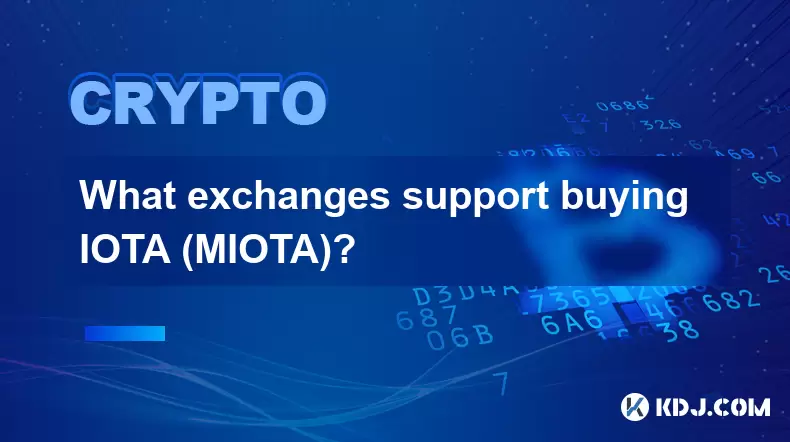
What exchanges support buying IOTA (MIOTA)?
Aug 07,2025 at 09:58pm
Understanding the Role of Private Keys in Cryptocurrency SecurityIn the world of cryptocurrency, private keys are the cornerstone of ownership and con...
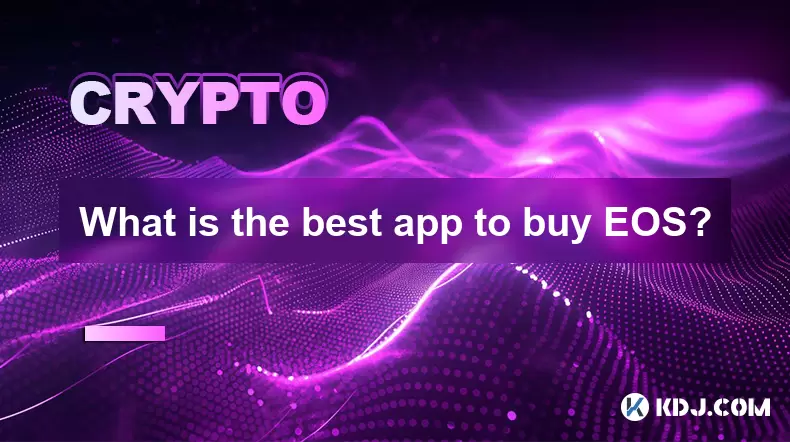
What is the best app to buy EOS?
Aug 07,2025 at 04:35pm
Understanding EOS and Its Role in the Cryptocurrency EcosystemEOS is a blockchain platform designed to support decentralized applications (dApps) with...
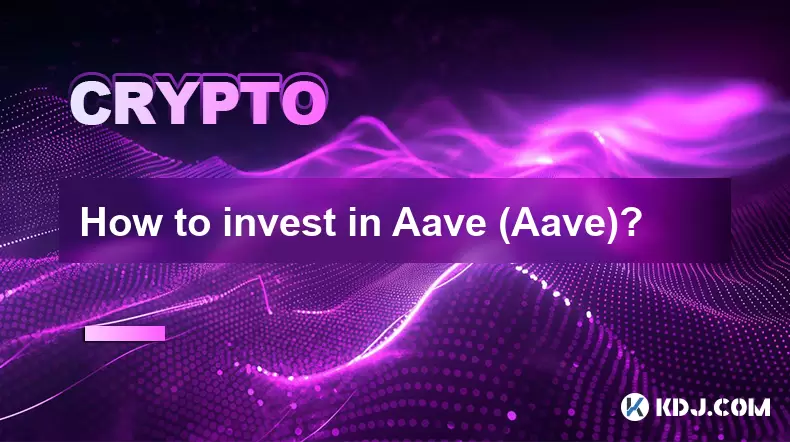
How to invest in Aave (Aave)?
Aug 08,2025 at 01:07am
Understanding Aave (AAVE) and Its Role in DeFiAave is a decentralized finance (DeFi) protocol that enables users to lend, borrow, and earn interest on...
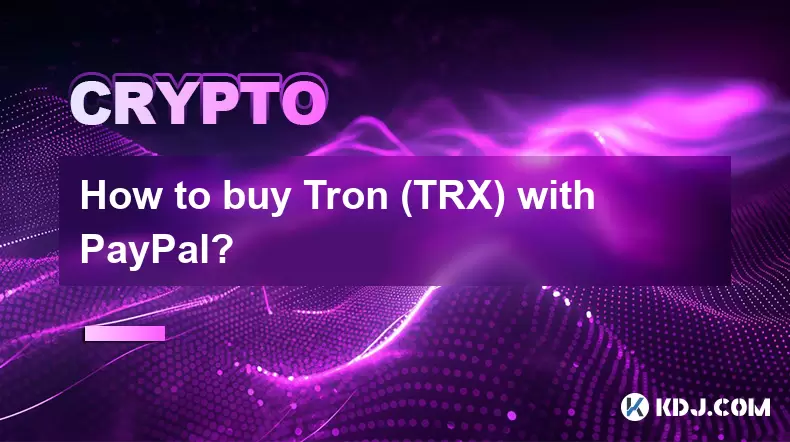
How to buy Tron (TRX) with PayPal?
Aug 08,2025 at 12:57am
Understanding Tron (TRX) and PayPal CompatibilityTron (TRX) is a decentralized blockchain platform focused on building a global digital content entert...
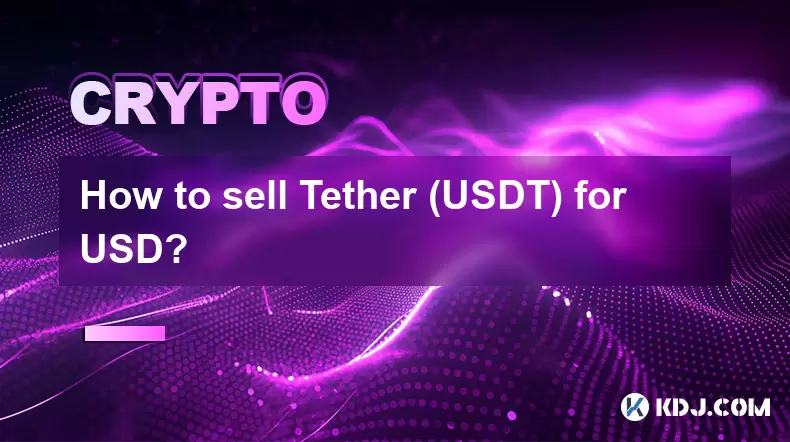
How to sell Tether (USDT) for USD?
Aug 07,2025 at 03:29pm
Understanding Tether (USDT) and Its USD ValueTether (USDT) is a stablecoin designed to maintain a 1:1 value ratio with the United States Dollar (USD)....

Where can I buy UMA (UMA)?
Aug 07,2025 at 06:42pm
Understanding UMA and Its Role in Decentralized FinanceUMA (Universal Market Access) is an Ethereum-based decentralized finance (DeFi) protocol design...

What exchanges support buying IOTA (MIOTA)?
Aug 07,2025 at 09:58pm
Understanding the Role of Private Keys in Cryptocurrency SecurityIn the world of cryptocurrency, private keys are the cornerstone of ownership and con...

What is the best app to buy EOS?
Aug 07,2025 at 04:35pm
Understanding EOS and Its Role in the Cryptocurrency EcosystemEOS is a blockchain platform designed to support decentralized applications (dApps) with...

How to invest in Aave (Aave)?
Aug 08,2025 at 01:07am
Understanding Aave (AAVE) and Its Role in DeFiAave is a decentralized finance (DeFi) protocol that enables users to lend, borrow, and earn interest on...

How to buy Tron (TRX) with PayPal?
Aug 08,2025 at 12:57am
Understanding Tron (TRX) and PayPal CompatibilityTron (TRX) is a decentralized blockchain platform focused on building a global digital content entert...

How to sell Tether (USDT) for USD?
Aug 07,2025 at 03:29pm
Understanding Tether (USDT) and Its USD ValueTether (USDT) is a stablecoin designed to maintain a 1:1 value ratio with the United States Dollar (USD)....
See all articles

























































































